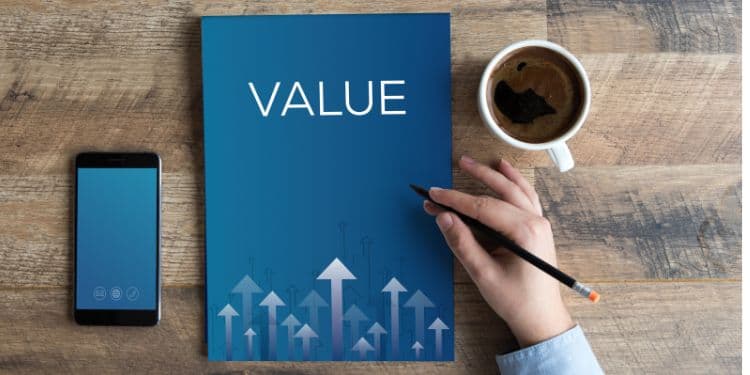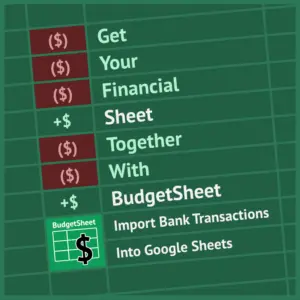Profit First is a cash management system. Mike Michalowizc adapted and modernized Grandma’s cash envelope budgeting system for business. He wrote the book Profit First to explain why it works, what it is, and how to use it in any business. I’ll summarize it here.
The concept and implementation of Profit First is simple. Sticking to it is the hard part. My job is to help you stick with Profit First by guiding you through the unique challenges that inevitably present themselves.
Let’s start with the simple part first, the concept.
The Formula
The GAAP (Generally Accepted Accounting Principles) formula for determining a business’s profit is “Sales – Expenses = Profit.” It is simple, logical, and clear. Unfortunately, it’s a lie. While logically accurate, the formula does not account for human behavior (or cash flow). In the GAAP formula, profit is a leftover, a final consideration, something that is hopefully a nice surprise at the end of the year. Alas, the profit is rarely there, and the business continues on its check-to-check survival.
With Profit First, you flip the formula to “Sales – Profit = Expenses.” Logically, the math is the same, but it is radically different from the standpoint of the business owner’s behavior. With Profit First, you take a predetermined profit percentage from every sale first, and only the remainder is available for expenses.

Pay Yourself First
Author and historian C. Northcote Parkinson theorized that our demand for a resource increases to meet the supply of it. That is why when you are given two weeks to do a project, it takes two weeks. When you are given eight weeks to do the same project, it takes eight weeks. And why, when given a $1,000 budget, you use the $1,000;. When given $10,000, you use all of the $10,000. Profit First makes Parkinson’s Law an asset. By taking profit first, the money available for expenses lessens, and you are forced to find ways to get the same things done for less money.
Admittedly, Profit First is nothing new. It is the application of the time-tested and world’s greatest financial mechanism, “pay yourself first,” applied to business ownership. Wealthy people know to pay themselves first and then use the remainder for expenses. Profit First teaches us to take our profit first and then use the remainder to run the business. The 401(k) retirement plan has been the greatest savings mechanism in US history because of this powerful “pay yourself first” premise. Profit First is already proving to be the greatest profit-generating mechanism in business history because of this same powerful principle. So, while Profit First is nothing new, it is truly effective.
Leverage Your Habits
If you are like most business owners, you don’t have the time or gumption to read the different accounting statements necessary to manage the financial aspect of their business. Theoretically, you should review and correlate your Income Statement, Balance Sheet, and Cash Flow Statement monthly (or more frequently), but few business owners do. You resort to “bank balance accounting,” where you check your bank balance daily. Then you make financial decisions based on what you see. Per Parkinson’s Law, you consume what you see in your bank account. Profit First encourages you to continue “bank balance accounting” by first allocating money to the profit account (and other accounts) so that you see the actual portion of deposits that are available for expenses and automatically adjust your spending accordingly.
Many business owners try to force themselves to become better at accounting and more disciplined in their fiscal management by pure willpower. But just like a muscle, willpower can be drained. And in a moment of financial stress or bigger than expected expenses, the business owner will break their own fiscal rules and spend the money they have. The principles of Profit First do not try to change your habits. Profit First works with your existing habits. First you allocate money to different accounts. This then removes the temptation to “borrow” from yourself. Your business will become fiscally strong, and you will benefit from regular profit distributions.

Principles of Profit First
As a Certified Public Accountant (CPA) and a Certified Profit First Professional, the best answer I have to the questions “Did I make money this year?” and “How can I ensure I make money next year?” is Profit First. So, what is Profit First? How do you set it up in your business?
As stated before, Profit First is Grandma’s cash envelope system modernized and adapted for business. This means that you will use multiple checking accounts to manage the cash of your business. I recommend you have six checking accounts and nickname them after their purpose: Income, Inventory, Profit, Owner’s Compensation, Taxes, and Operating Expenses.
You need to understand the core principles of Profit First to help you stay away from danger, make money, and piece together financial freedom:
1- Use smaller plates
2- Serve sequentially
3- Hide your money
4- Enforce a rhythm
Use Smaller Plates
Instead of using one bank account (or one big plate), Profit First has you open multiple checking accounts (or smaller plates) to help you manage the cash for each significant area of your business. This helps to prevent you from overspending and undersaving.
Serve Sequentially
“Serving sequentially” means prioritizing and assigning our money to certain expenses. This helps us save money for inventory, emergency funds, taxes, payroll, and other important business expenses.
Hide Your Money
When you “hide your money,” you are “hiding it” from the other significant areas so you do not overspend. No more will you rob Peter to pay Paul, even accidentally. When a purchasing decision comes along, you must make do with what we’ve got in that specific checking account for that category.
Enforce a Rhythm
“Enforcing a rhythm” means that you don’t go into crazy spending mode when the cash is coming in and don’t panic when you feel the cash pinch. When you get into a rhythm with your cash management, you’ll have your finger on the pulse of your business, allowing you to adjust quickly.
The rhythm of Profit First is simple: every two weeks, transfer the balance in your Income account to your other checking accounts based on your predetermined percentages. Every quarter, you make an extra payment on your debt, pay a profit distribution, pay estimated quarterly taxes, and adjust your percentages. Annually, you review your plan for financial freedom with your Certified Profit First Professional, me (shameless plug).

Profit First Accounts
Now, open additional checking accounts. Again, I recommend you have six checking accounts and nickname them after their purpose: Income, Inventory, Profit, Owner’s Compensation, Taxes, and Operating Expenses.
The Income account is to collect all the cash coming into the business and acts as the serving tray for the other accounts.
The Inventory account is to buy inventory for the business.
The Profit account has three purposes:
- To serve as an emergency fund for the business.
- For businesses with debt, this is used to pay off the debt.
- To reward the business owners for their hard work each quarter (think quarterly bonus).
The Owner’s Compensation account is to compensate the owners regularly (providing stability for the owners).
The Taxes account is to save for and pay for the business and personal annual income taxes of the owners. It is not for sales taxes, payroll taxes, or any other taxes.
Finally, the Operating Expenses or Opex account is to pay for everything else not mentioned above. In most cases, your existing business checking account will become the Opex account.
Figure Your Allocation Percentages
Working with a Certified Profit First Professional like me (or downloading my free Profit First Starting Guide or reading the book Profit First), you will review the last 12 months of financial records to determine what percentage of your business income you are spending in each of the following categories: Inventory, Profit, Owner’s Compensation, Taxes, and Operating Expenses. This is your Profit First cash flow analysis. These percentages will be your starting point. You will adjust these each quarter to help you piece together financial freedom.

Start Your Rhythm
Once you have opened your accounts and figured out your percentage, you are all set to use Profit First. This will help you manage your cash and piece together financial freedom. Profit First ensures you can answer the questions “Did I make money this year?” and “How can I ensure I make money next year?”
Go to www.CurtisAccountingSolutions.com/free-tools to download the free Profit First Starting Guide that walks you through the details of getting Profit First set up in your business.






